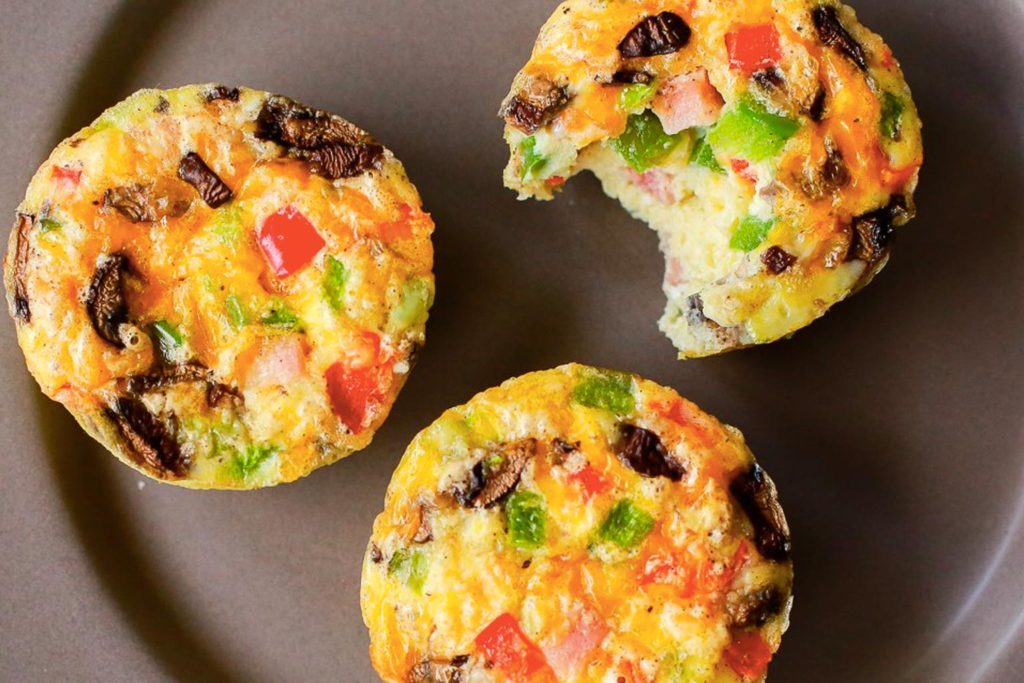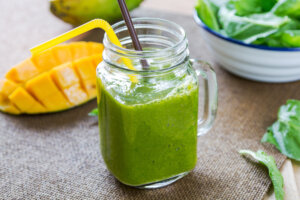We all know how important it is to eat a healthy diet filled with nutritious food. But making healthy choices can be a lot more complicated than it sounds! Sure, we know the basic information – choosing whole foods over processed foods, whole grains over white bread and pasta, low-fat dairy products over full-fat, avoiding sugary drinks like soda and eating lots of plants like berries and leafy greens. But while some of that advice is simple, other advice, like shopping the perimeter of the grocery store rather than the middle, can leave you with a lot of questions. Does that mean you have to cut out your favorite foods, or that you can never eat frozen pizza again?
Absolutely not. When you’re making healthy happen, it can be hard to pass on foods you would typically indulge in, but the truth is, you don’t have to. Whether you’re looking to lose weight, maintain your current weight, or simply add more nutritional value to your diet, these so called “guilty foods” can be made into healthy choices. It just requires thinking outside the box and inside your kitchen!
1. Meatloaf
Eating meatloaf doesn’t have to be a mystery. Since studies have linked eat lots of red meat to higher risk of heart disease, we recommend replacing your standard ground beef with a leaner protein like ground turkey, which still packs plenty of iron and protein. This recipe also adds quinoa, one of our favorite whole grains (okay, it’s technically a seed, but it’s classified as a whole grain), to pump up the protein and plant power, plus dietary fiber. Dietary fiber keeps you fuller longer, which means you’ll feel satisfied and less likely to reach for dessert you maybe aren’t totally dying for. It’s also much lower in sodium than anything store-bought (salt, aka sodium, is a great preservative, but not so great for our blood pressure). While this recipe doesn’t call for it, we recommend adding a vegetable, like a cup of chopped-up carrots or kale, so that you can benefit from extra vitamins and minerals. This recipe is a great addition to any diet, so you can truly feel comfortable consuming this comfort food.
2. Guacamole
You might already know that guac is a healthy choice, but the high fat and calorie content in avocados can scare people off. Never fear – avocados are packed with heart-healthy polyunsaturated and monounsaturated fats! You’ve probably heard about the importance of getting your omega-3 fatty acids, but have you heard of omega-6s and omega-9s? Here’s a quick lesson in healthy fats!
Omega-3 fatty acids are also known as polyunsaturated fats. They’re an essential fat – meaning they aren’t produced by the body – and they have important benefits for your heart, brain and metabolism. Yes, you read that right – this type of fat is good for your metabolism! Then there’s omega-6 fatty acids, which are also a type of polyunsaturated fats. They have some health benefits, such as reducing inflammation, but most experts recommend consuming more omega-3s than omega-6s. And lastly, there’s omega-9 fatty acids, also known as monounsaturated fats. Monounsaturated fats can be produced by the body, so they’re non-essential, but they still have health benefits like reducing inflammation. And whichever of the omegas you choose, know that unsaturated fat is always better for your overall health than saturated fat, which is why guacamole makes such an excellent healthy snack.
Seasoning packets or premade containers of guacamole can’t compete with the simplicity of this spread made from scratch. Just combine mashed avocados with diced red onion, jalapenos, cilantro, lemon juice and lime for a fresh dose of healthy fats! You can also add salt to taste, but keep an eye on the sodium.
3. Egg Casseroles
We’re no longer too concerned about cholesterol when it comes to eggs. So grab a carton and cook them any way you like. If you love eggs but don’t have the time to prepare them each day, we recommend these tasty crustless-quiches or a veggie filled egg bake. When they’re prepared in muffin cups, they become an easy grab-and-go snack that’s full of protein and low in calories!
4. Baked and Loaded Potatoes
Who doesn’t love baked potatoes, specifically loaded baked potatoes, topped with cheese, onions, sour cream and more? If you can’t live without your favorite game day snack, no worries! Know that there’s a healthier alternative that you can enjoy as part of your healthy eating plan: sweet potatoes!
Foods with more vibrant colors, like sweet potatoes, have more nutritional value and antioxidants than traditional white potatoes. Sweet potatoes contain the antioxidant compound beta carotene, which helps fight inflammation. For choosing potatoes, it’s best to stick to the ones that add color to your plate. When you choose sweet potatoes, you’re getting minerals like potassium and iron, plus B vitamins, Vitamin A and Vitamin C! And don’t peel them – sweet potato skin contains extra nutrients and dietary fiber. Believe it or not, sweet potatoes also contain fewer calories than white potatoes – so you’re getting more nutrition in fewer calories!
Making baked potatoes healthier doesn’t stop at the potatoes. For people who want to health-ify their loaded baked potato bar, we recommend topping with diced veggies like broccoli or peppers, salsa, and plain greek yogurt to replace sour cream!
5. Rice
Rice can sometimes get a bad rap as being a simple carbohydrate, which has led to lots of people exploring lower calorie products and replacements for it, like cauliflower rice. Carbohydrates, however, are an important part of our diets, and there’s no need to entirely cut them out of your clean eating plan. However, it can be wise to find healthier substitutions for them, such as whole grain options with more fiber and protein.
If you want to make your favorite stir fry recipe healthier, brown rice seems like the obvious choice, but it actually has a very similar nutrition profile to white rice. That’s why we want to introduce you to a new variety: wild rice!
You’ve probably heard of wild rice before, but have you ever tried it? Outside of chicken and wild rice soup, that is. Wild rice, like quinoa, is slightly higher in protein, giving it a nutritional advantage to white or brown rice. It’s also an excellent source of dietary fiber. Consider utilizing wild rice in dishes that would normally call for white or brown rice like stir fries, soups, or salad recipes.
6. Pizza
Hang on a second, healthy pizza? You bet! While pizza often gets categorized as “cheat food” (there’s no such thing!), and is maybe the first example that comes to mind for people who are trying to avoid unhealthy food, it can actually be made quite healthy – especially if you revamp it from crust to toppings!
For starters, there are plenty of healthy pizza crust options that add nutrients, fiber and protein to your meal. Homemade whole wheat pizza crust can be as easy as 4-5 ingredients—water, yeast, salt, whole wheat flour, and sometimes a bit of sweetener. There’s also less traditional, but just as delicious, options, like cauliflower pizza crusts, quinoa pizza crusts, chickpea pizza crusts, sweet potato pizza crusts, and even spaghetti squash pizza crusts. All of these are healthy carbohydrate options for various reasons: quinoa and chickpeas add dietary fiber and protein, compared to white flour, and all of the veggie pizza crusts add more nutrients! Cauliflower is a great source of Vitamin K, and spaghetti squash is an excellent source of dietary fiber and vitamin C.
Look at all those options for making your pizza part of a healthy diet – we haven’t even gotten to the toppings yet!
If you love red sauce on pizza, our word of advice is to try making your own, as store-bought pizza sauce can contain a lot of added sugar and sodium. Check the nutrition facts: One cup of pizza sauce can contain up to 12 grams of sugar! That’s definitely not what the doctor ordered for your pizza night. If you’d rather keep things easy, just make sure you check the packaging and manufacturer’s label to find a sauce that has less sugar. We also recommend a simple sauce of olive oil and garlic. Then, it’s topping time: you knew that we were going to suggest a bunch of vegetables, right? Veggies like broccoli, peppers, onions and leafy greens make for a delicious pizza. If you’re still looking for meat to bulk up the protein, we’d recommend skipping the pepperoni and opting for lean meats like chicken or turkey. If you want to get really fancy, you could try making vegetarian pizza with legumes like lentils or black beans. Just like that, you’ve got a super healthy pizza that comes together before the delivery man arrives. Bon appetit!
7. Lasagna
Pasta, like pizza, is one of those foods that get dubbed “unhealthy” for being high in calories and low in nutrients. Thankfully, you can change that! The main culprit in lasagna is, of course, the pasta. With thinly-sliced zucchini or eggplant as noodles, you can turn this dish into a low-carb meal, just like that! Since everything gets cooked together in yummy tomato sauce, we bet you won’t even be able to taste the difference – or the dietary fiber, magnesium, and vitamin A you get by using zucchini! There’s no need to forgo a favorite family recipe with vegetables on your side.
If you’re on a roll with healthy swaps and want to keep going, we’d also recommend choosing a leaner meat, like ground chicken or turkey, in replacement of the ground beef. (You probably saw that one coming.) And lastly, one of our favorite clever lasagna swaps: trade whole milk ricotta for cottage cheese! Cottage cheese keeps things within the dairy food group, but adds more protein than whole milk ricotta. You can swap it proportionally with ricotta, and we guarantee you won’t be able to taste the difference. (Just watch out for its sodium content and speaking of sodium content, check the label on the tomato sauce you’re using as well!)
8. Burgers
That’s right, even your favorite burger can be healthy. Well – maybe not your exact favorite burger. But with a few swaps, we bet you can get pretty close! Opt for lean sources of protein when indulging in a burger. Rather than ground beef, ground turkey or bison make for great burger patties. Salmon burgers are also a delicious swap – researchers from the American Heart Association actually recommend eating fish, like salmon, twice a week. While salmon and other fish burgers won’t have the same texture as those made from ground meat, they’re a healthier, and still meaty, replacement for them. Regardless of the meat you choose, homemade burgers give you better control over the ingredients and nutrition facts, like sodium and fat content.
Veggie burgers, made from nuts, legumes, seeds and whole grains are also a great option. While they might not exactly replicate your favorite burger, they’re a great way to cut back on saturated fat, up the dietary fiber, and increase the plants that you eat. Once you’ve got a healthy burger patty, it’s time to talk buns and toppings.
It’s obvious that a regular white bun, while it may be the classic choice for a burger, isn’t exactly a nutritious food. We recommend swapping out a whole-wheat bun to add dietary fiber and protein. You can also go bunless or try a grilled vegetable “bun,” like eggplant or portobello mushrooms. This cuts down on the carbs and is a great choice if weight loss is one of your goals.
9. Pancakes
Yes, even the delicious breakfast standby can turn into a healthier choice than whole-grain breakfast cereal. And what’s the key? Paleo recipes! Paleo chefs know what’s up when it comes to health-ifying pancakes. The paleo diet is focused on eating the types of foods presumed to be eaten by early humans, like meat, fish, vegetables, fruit and nuts. That means avoiding grains and processed foods, so you won’t find any white flour in paleo pancakes. Instead, they call for almond flour and coconut flour, which adds nutritional value while keeping the recipe gluten and grain-free. Nuts, like almonds and walnuts, pack minerals like calcium, magnesium, as well as healthy fats, Vitamin E and fiber. Studies have linked magnesium, potassium and calcium deficiency to high blood pressure, so adding almonds to your diet can help lead to lower blood pressure. Studies have also shown that nuts can help boost your metabolism and help with weight loss. So, what are you waiting for? Almonds are a healthy snack on their own, and they make nutritious flour for healthy pancakes! We like this recipe, which calls for almond flour and coconut flour. You can also find healthier pancake recipes that are made with whole wheat flour or oat flour. Looking for something quick and simple? Try our 3-Ingredient Banana Pancakes, instead!
To add flavor to your pancakes, we recommend taking it easy on the syrup. Eating too much sugar in one sitting can lead to energy crashes later, and that’s just a short-term effect. You don’t need a researcher or a doctor to tell you that eating lots of sugar doesn’t align with weight loss goals. Furthermore, researchers who studied the immune system found that eating too much sugar in one sitting actually weakens the white blood cells in your immune system. Studies have also linked sugar consumption to inflammation. And because sugar can lead to obesity, which leads to high blood pressure, avoiding it can help maintain low blood pressure,
That’s a long-winded and long-researched way or saying, skip the syrup! Try topping your pancakes with things like peanut butter, bananas, walnuts, berries, orange slices or whatever you have on hand. We love nut butters like peanut butter because they slow digestion with satisfying healthy fats and protein. And lastly, skip serving fruit juice at breakfast (it’s basically as sugary as soda) and opt for milk or water instead.
10. Cookies
Who’s to say cookies can’t be a healthy food? You just have to know which food groups and ingredients to look for. We seek out cookies that are made with olive oil, applesauce or bananas, instead of butter. Bananas are great for binding, moistening and sweetening in healthy cookies. Whole grain ingredients like oats, whole wheat flour or other flours are also important because they contain dietary fiber and give you longer-lasting energy. Cookies that have berries or nuts in them, instead of chocolate or butterscotch chips, are a good choice as well. Zest from oranges and lemons can also help bring the flavor! If you just can’t imagine eating a cookie that doesn’t have chocolate in it, we suggest dark chocolate, as dark chocolate packs the most antioxidants. Try healthy cookies instead of your regular preference for a few weeks, and we’re sure you’ll start to feel the benefits.
There are plenty of cookie products on the shelves with names that claim to be healthy, but the best way to make sure your cookies are healthy is to bake them yourself. Don’t miss our delicious Apple Butter Oatmeal Breakfast Cookie recipe, which you’re sure to love. What’s better than a cookie for dessert? A cookie for breakfast!
11. Dips
Do you prefer sweet dip or savory? While a bowl of dip paired with a bag of potato chips doesn’t exactly wear a health halo, there are lots of ways to healthify your favorite dip! Thankfully, with aromatics like garlic, onion and seasoning, you can add flavor without adding tons of fat. Plain Greek yogurt is the ultimate substitution for ranch, sour cream, or cream cheese-based dips. Try this Greek yogurt-based spinach and artichoke dip or this healthy and sweet dip for fruit! Just keep an eye on the sodium for savory dips, and try to avoid dipping with potato chips. Not just because they’re high in sodium but because one cup packs 150 sneaky calories and 10 grams of fat. We recommend dipping with veggies instead, which adds dietary fiber as well as important vitamins like Vitamin C, Vitamin K and B vitamins like B12 (aka folate). You can also try out chips made from legumes like black beans or chickpeas!
12. Grilled Cheese
Simply, easy and crowd-pleasing—grilled cheese is a weeknight win. And it doesn’t have to be entirely unhealthy! Using whole-wheat bread ups the grams of dietary fiber and is a must for those that want to health-ify their sandwich. Studies have shown increasing evidence that whole grain consumption is linked to reduced risk of chronic disease, so what are you waiting for? Add items like whole grain bread and pasta to your cart, stat!
If you want an even healthier grilled cheese, well, it’s hard to take the cheese out, so we suggest replacing some of it with avocado, or adding deli meat for protein. Cooking in olive oil rather than butter is a wise choice as well. For the more adventurous, try an addition of jam, sliced apples, and more. Cooking Light gives us plenty of good reasons to get inventive with this article about grown up grilled cheeses.
Looking for more?
Try our email list! Sign up below.



